Exotic flowers give a special charm to any room. The atmosphere of a tropical corner is created by orchids. Popular home types: dendrobium, cattleya, papiopedilum and phalaenopsis. There are many features in caring for a capricious flower. The article is devoted to only one frequently encountered problem, why the leaves turn yellow on the orchid, how can the beauty be helped to cope with this trouble as quickly as possible.
Material Content:
Natural Causes of Yellowing Orchid Leaves
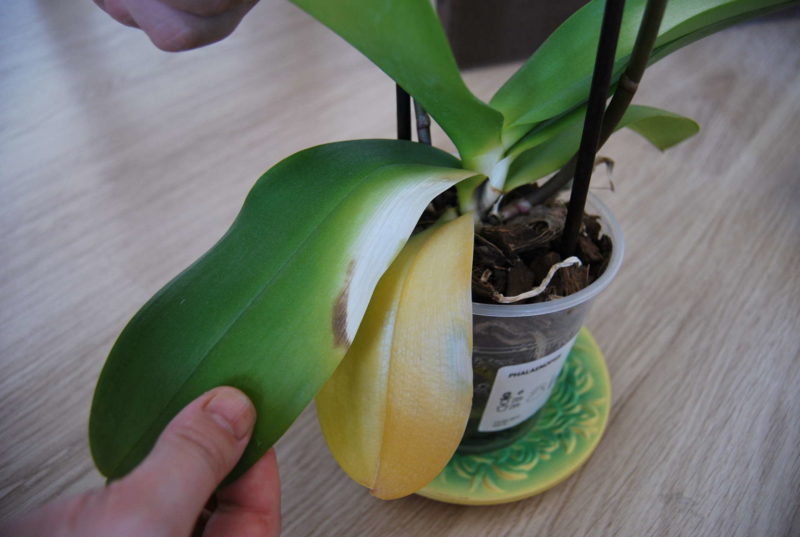
An orchid purchased at a flower shop is usually in a state of active flowering. The happy owners of a bright wonder, wanting to keep the buds as long as possible, out of inexperience make a number of mistakes: they transplant early, put in direct sunlight, excessively fertilize.
Whenever a houseplant changes its habitat, it becomes stressed and needs a period of adaptation. The so-called quarantine is recommended to withstand at least 14 days. The flower is kept separate from other plants and observed. Only after quarantine, if the roots were in sphagnum, the orchid is transplanted. A planted plant in the soil can not be disturbed for another two years.
The main indicator of health is the type and quality of leaves, they always respond first, usually in the first five days.
The dying of the lower leaves of any kind of orchid is a natural aging process. It is significant that the most common hybrids may fall one or two leaves from below, and an orchid of the genus Nobile will lose all the foliage at once. And this is normal.
The fading leaf does not need to be rushed to remove, injuring the plant, it will dry and fall off, after which it can be removed. The usual aging process occurs annually during flowering and dormancy.
Thus, in a newly acquired orchid, the leaves turn yellow at the bottom at the time of adaptation. In the future, it develops, and the yellow leaves dry out due to natural aging.
Improper plant care
Other causes of dying foliage are added signs of ill health: lack of flowering, stunting, spots and growths. It is necessary to review all points of the tropical flower. Let's analyze the most common mistakes in caring for orchids.
Read also: primer for orchids
Irrigation
Orchids are sensitive to any changes in irrigation mode. This is one of the main causes of plant wilt. Both drought and waterlogging upset the balance of substances by changing the color of foliage.
Overflow. Novice gardeners often give the orchid more water than is needed for growth. As a result, the earthen lump is dense, the air does not pass, the roots are under pressure, the lower leaves honk yellow. It also creates a favorable environment for putrefactive bacteria. Black spots may appear on all leaves and roots, their structure becomes soft.
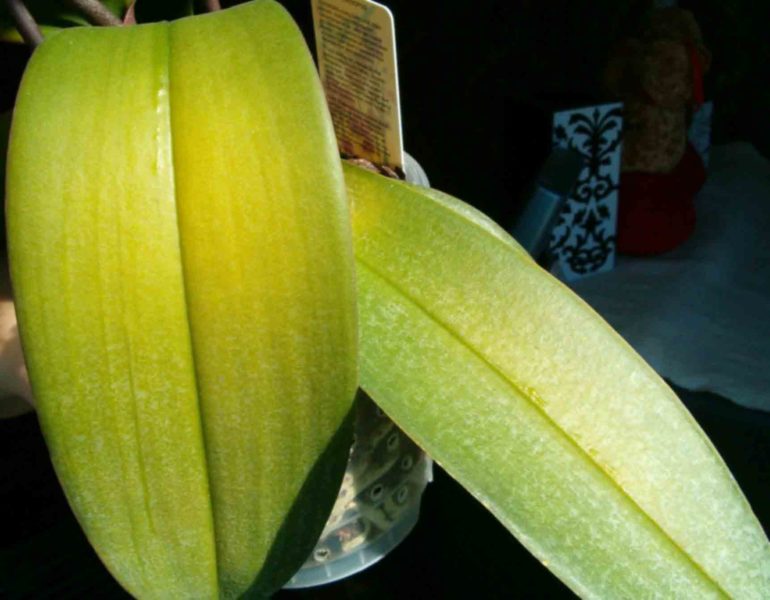
It is necessary to take into account the humidity of not only the surface layer, but also the middle of the substrate. Transparent pots are good for orchids; it is convenient to monitor humidity visually in them. In an opaque pot, experienced flower growers use a wooden stick. By placing it in the ground near the edge, you can diagnose the moisture or dryness of the earthen coma in a few minutes. Aerobatics - determining the degree of moisture content by weight, raising the capacity of the orchid.
Lack of moisture. Relatively less often, but it so happens that an apparently healthy flower with normalized irrigation gives yellow leaves. A possible reason may be the method of watering and too deep drainage. Water just quickly leaves, the roots do not have time to be fed in order to obtain the necessary substances.
Young shoots begin to take strength from the old shoots, the latter, in turn, quickly turn yellow and die. The solution to this problem is to change the method of watering. For fourteen days, we treat the orchid from drought by immersing the pot in water so that the entire substrate is saturated with moisture. She will quickly return to her initial healthy development.
Water quality. If the watering regime of the orchid is balanced, and the leaves continue to turn yellow, look at the quality of the water. Hard water with impurities greases the earth. Elementary settling for three days or filtering helps to make water softer. You can use melt water. The soil will have to be changed completely as soon as the orchid finishes blooming.
Lack or excess of light

It is impossible to say about orchids that they are photophilous or shade-loving. Among them there are representatives who prefer various degrees of illumination, so the flower is considered moody. Although for proper care you just need to know the exact name.
Orchids are placed on the southern windowsills, which love bright light without direct sunlight. As a rule, a temperature of about 30 degrees is comfortable for them. Such photophilous species include dendrobium, Cattleya, Vanda, Lellia, Oncidium.
On the western and eastern windowsills they put pots with orchids, which prefer a less bright light, they only need sun in the morning or evening. Such representatives include cumbria, cymbidium, miltonia, odontoglossum.
On the northern windowsills, stands outside the window, orchids calmly grow, which need a moderate amount of light. Such orchids also need a temperature of 18 to 25 degrees. This group includes: venus slipper, phalaenopsis.
The lack of lighting in winter is well complemented by fluorescent lamps. They are recommended to be included for several hours so that resting orchids do not overheat.Violation of the light regime threatens not only yellowing, but the loss of all leaves.
Orchid sunburn
The orchid has yellow spots on the leaves facing the sun. The sign, of course, indicates a burn.
Orchid hybrids, which are purchased in stores, do not tolerate prolonged sunlight. Burns are easier to prevent than to heal later. The place around the burn dries out over time, as a result, the orchid loses its leaf.
As soon as yellowing was noticed, the orchid needs to change its habitat. You can close the window with paper, put it behind other broadleaf plants or arrange shading in another way. Damaged leaf does not need to be removed, a healthy orchid is able to restore a small area.
Errors in fertilizing orchids
The lighting and watering regimen must be balanced with orchid nutrition throughout the year. Possible mistakes: overfeeding and lack of nutrients.
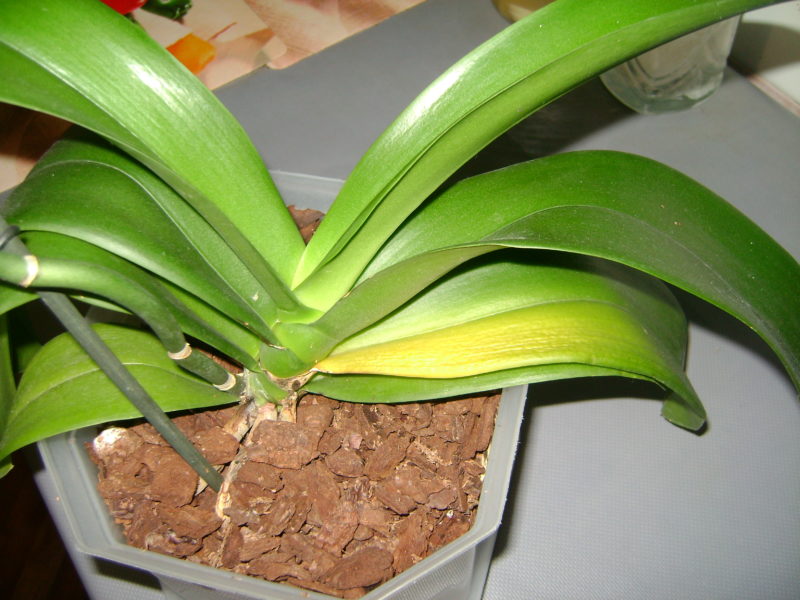
Important points when fertilizing orchids:
- for each type of orchid has its own fertilizer and dosage;
- during the adaptation period after the purchase, the orchid is not fed for about a month;
- a sick orchid and in the presence of any pests can not be fertilized;
- young orchids are fed with watering after wetting the soil;
- before breeding, shake the container with fertilizer, the substances are distributed evenly;
- in the winter and summer periods of feeding it is better to suspend;
- house orchids do not need growth stimulants;
- for one top dressing take half the dose, which is indicated in the instructions;
- fertilizer must contain: potassium, phosphorus and nitrogen.
An excess of substances. The overfed orchid will live no more than two years, then its leaves will turn yellow, and it will die. The yellow tips of the leaves indicate excess calcium, while the entire substrate is better to replace with a new one.
Lack of substances. Potassium deficiency is reflected by yellowness on the top of the orchid leaf. At the next stage of damage, dead veins on the inner side of the sheet are visible. Young shoots and leaves take the mineral away from their older neighbors. Further, the orchid loses its leaves completely, if you do not take action. In this case, you should also change the substrate completely.
Diseases and pests as a cause of yellowing of leaves
Possible causes of fading and yellowing orchid leaves may be pests or diseases. A tropical flower is a tidbit for all known domestic pests. If signs of the disease or parasites are detected, the orchid must be isolated from other flowers.
Common sores cling to orchids in violation of the temperature regime, watering and lighting, or from infected plants. Fungal, viral, or bacterial infections lead to dark yellow spots or to mycelium tubercles. Asian orchids often suffer from fungal infections. The virus can pick up a flower at the time of stress during transportation and change of care regimen, which is manifested by dark rings on the leaves.
Pests dangerous for orchid leaves:
- the spider mite under the leaf and on the shoots organizes its thin web;
- aphids love the inside of a leaf blade, making it sticky to the touch;
- growths indicate the presence of a scab, which can be seen with a magnifier;
- translucent winged thrips settle on an orchid with low air humidity, they leave a silver layer on the leaves, shoots and substrate;
- leaf deformation and stunting indicate damage to the orchid by nematodes;
- wood lice attack orchids in street conditions.
Yellowed leaves of an orchid - how to treat?
A diseased orchid or an attacked pest needs quick treatment. Proper diagnosis of yellow leaves will allow you to choose the right recipe for saving a flower.
If an infection is detected, it is strictly forbidden to open the tubercles. This is a spore fungus treated with a fungicide. Large lesions are treated by removing a section of the sheet, followed by treatment of the section with iodine.
When the virus is diagnosed, the orchid is sprayed with antibiotic and fungicide.
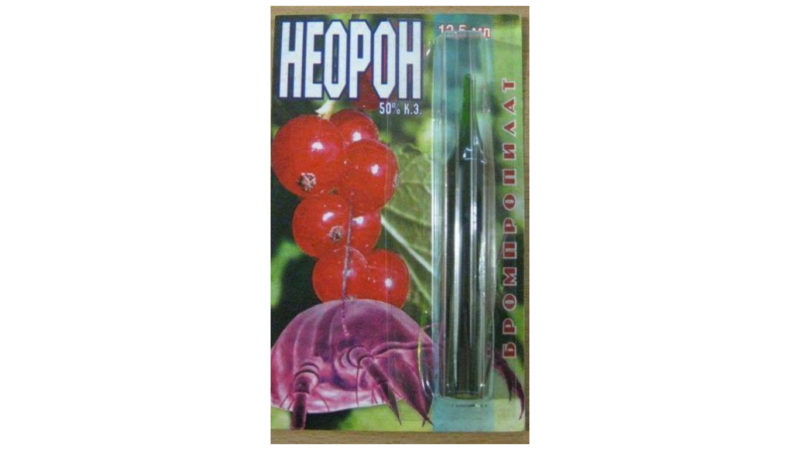
Spider mites are washed off with warm water and covered with a bag for three days. As a radical remedy, Neoron and Thiophos drugs are suitable.
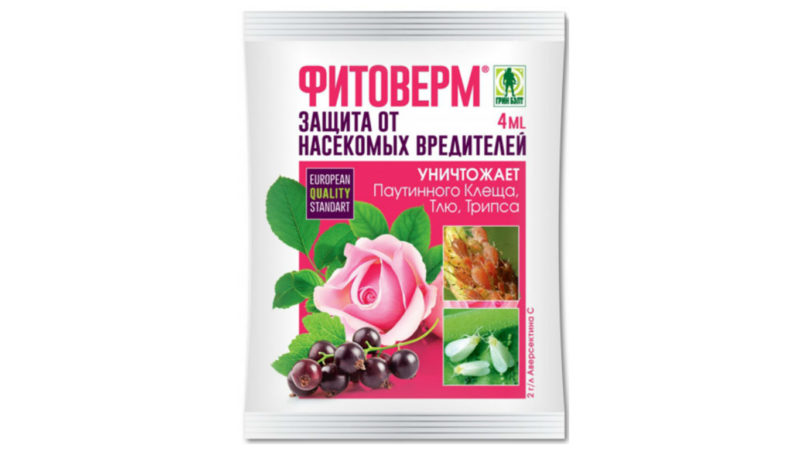
If aphids are present, use a warm soapy solution. It is useful to spray the orchid with Fitoverm or an infusion of citrus skins. For infusion, take 100 grams of skins per liter of water. Within a week, the orchid is sprayed every five hours.
Scaffold does not tolerate olive oil diluted in water (1 tablespoon per 500 grams of water). The solution is applied to the affected leaves three times after 7 days. Then you can spray “Fitoverm” or “Actellik”.

Thrips from the leaves and from the substrate is washed with warm water, the affected areas are cut off. It is useful to spray Aktellik three times every 10 days.
Nematodes - microworms die at a temperature of 40 degrees, but the orchid will not survive it either. The safest option for a flower is to water it with soluble Levamisal or Dekaris tablets.
The wood louse will pop up if you soak the pot in another larger container. Then you can wash the roots and transplant the orchid in a healthy environment.












